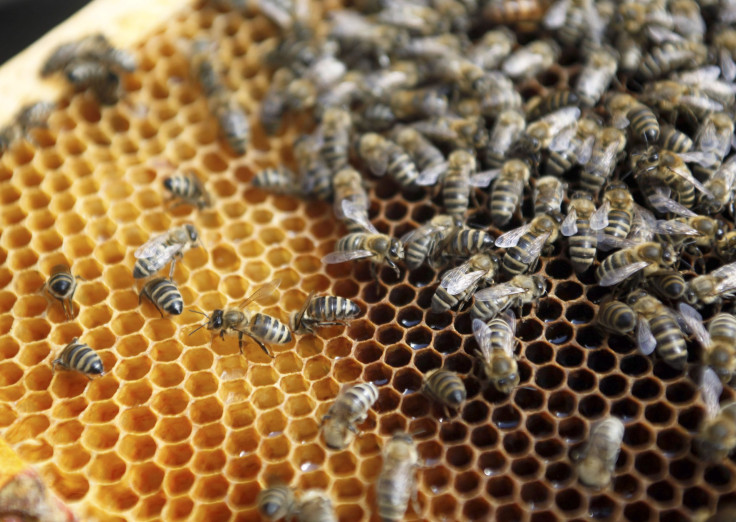Colony Collapse Disorder ‘Highly Likely’ Caused By Insecticides, Harsh Winters Increase Honey Bee Deaths

Researchers have again linked the unexplained decline in honey-bee populations worldwide, a phenomenon known as colony-collapse disorder (CCD), to a certain class of insecticides called neonicotinoids. Furthermore, new research found that colder winters have aggravated the condition.
In a study released Friday in the Bulletin of Insectology, scientists from Harvard University revealed that exposure to two neonicotinoids, the most widely used class of insecticides in the world, was responsible for half of the colonies they studied dying.
"We demonstrated again in this study that neonicotinoids are highly likely to be responsible for triggering [colony-collapse disorder] in honey-bee hives that were healthy prior to the arrival of winter," Chensheng Lu, an associate professor of environmental exposure biology at the Harvard School of Public Health and lead author of the study, said in a statement.
The new study builds on the university’s previous work that discovered a link between just one kind of neonicotinoid, imidacloprid, and colony collapse disorder. This time around, researchers focused on imidacloprid as well as clothianidin and found that both chemicals had the same effect on honey bees – causing them to abandon their hives in winter and die.
Between October 2012 and April 2013, researchers observed 18 bee colonies in three locations in Massachusetts. Scientists treated two colonies at each location with average doses of imidacloprid, two colonies with clothianidin and left two others untouched. They noted that half of the bees in colonies that were treated with neonicotinoids left their hives and died with symptoms resembling colony-collapse disorder.
Honey-bee colonies that have collapsed have a complete absence of adult bees, with few or no dead bees in or around the colonies.
"It is striking and perplexing to observe the empty neonicotinoid-treated colonies because honey bees normally do not abandon their hives during the winter," researchers wrote. "This observation may suggest the impairment of honey bee neurological functions, specifically memory, cognition, or behavior, as the results from the chronic sub-lethal neonicotinoid exposure."
The results of the 2012-2013 study were in some ways at odds with the researchers’ previous work with colony-collapse disorder. In the 2012 study, 94 percent of the colonies treated with insecticide were killed. Researchers attribute the bleak results of that study to a particularly harsh and lengthy winter.
They say the extreme cold could have exacerbated the effects of the chemicals.
Other studies have suggested that honey bees’ reduced resistance to mites or parasites is a result of exposure to pesticides, but the new study counters that view. Bees in the hives exposed to insecticides had nearly the same levels of infestation as a group of control hives that survived the winter.
When it comes to why the insecticides are causing the bees to leave their hives and die, the research is still unclear.
“Although we have demonstrated the validity of the association between neonicotinoids and CCD in this study, future research could help elucidate the biological mechanism that is responsible for linking sub-lethal neonicotinoid exposures to CCD,” Lu said in a statement. “Hopefully we can reverse the continuing trend of honey-bee loss.”
© Copyright IBTimes 2024. All rights reserved.






















